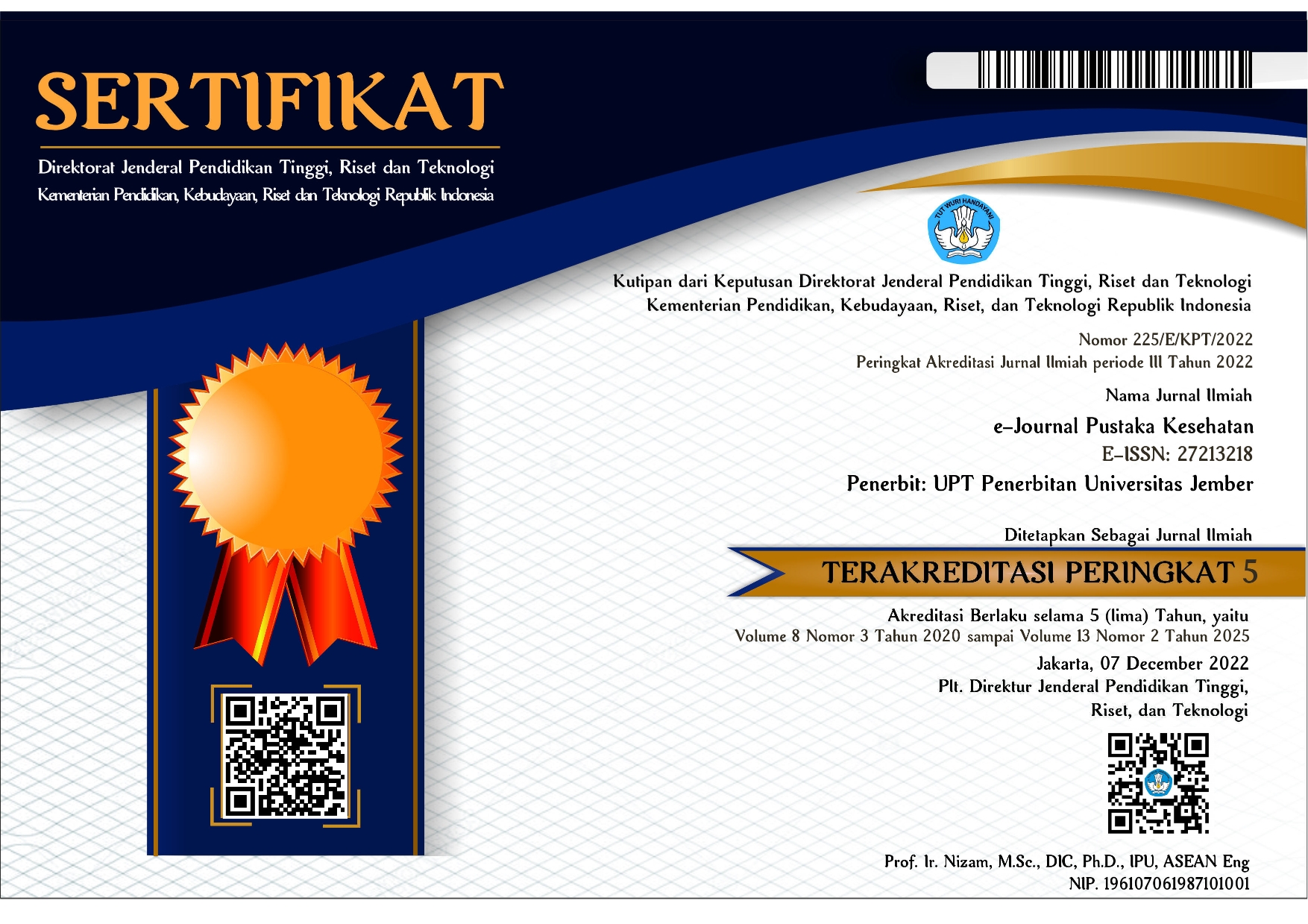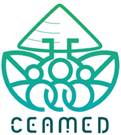Gambaran Balance Cairan Pada Anak Diare Setelah Diberikan Pemenuhan Kebutuhan Cairan di Rumah Sakit Kaliwates Jember
DOI:
https://doi.org/10.19184/pk.v8i3.18945Keywords:
Children, Diarrhea, Dehydration, Fluid BalanceAbstract
Diarrhea is a global event in various countries, including in many developing countries. Management of diarrhea is to use fluid rehydration. Other diarrhea management can be used with supplements, using Oral Rehydration Salt (ORS), using medication from the doctor, and drinking lots of water to replace lost fluids. This study aims to determine how to describe the fluid balance in children with diarrhea after being given the fulfillment of fluid needs in the hospital. The research was conducted at Kaliwates Hospital in Jember, with the research time used by researchers was one month. The sample of this study was thirty-two children of diarrhea patients with mild, moderate, severe dehydration. Data collection was carried out for three days while the child is hospitalized. The result of this study was obtained from total sampling. It was obtained that the fluid balance in diarrhea children did not all turn into balance. There was excess fluid, and they still experienced dehydration. From the research data, it was found that most of the experience of extra fluid status. The study concludes that after rehydration, children have an increasing fluid status. Fulfillment of fluids in children with diarrhea aims to reduce the risk of decreased fluid and maintain body fluids when they lose fluid through liquid feces. Fluid balance makes people's body became immune to the disease.
Downloads
References
[2]. Juvitha DC, Nurbaiti L, Suryani D. (2019). Gambaran Kasus Diare Akut pada Anak di Bawah 5 Tahun yang dirawat Inap di RSU Provinsi NTB tahun 2015. Jurnal Kedokteran Unram 2019. 8 (1): 13-6.
[3]. Poka H, & Duke T. Clinical management of diarrhoea in children. Papua and New Guinea Medical Journal 2013. 56: 156–161.
[4]. Herdman T . NANDA International Diagnosis Keperawatan. EGC.Jakarta. 2015.
[5]. World Health Organization. 2017.Diarrhoeal Disease. https://www.who.int/en/news-room/fact-sheets/detail/diarrhoeal-disease. [Diakses pada 10 Juni 2019].
[6]. Kusnanto. Modul Pembelajaran Pemenuhan Kebutuhan Cairan & Elektrolit. Surabaya: Fakultas Keperawatan Universitas Airlangga. 2016.
[7]. Wardani S, & Purborini N. Penggunaan Antibiotik Dan Antidiare Pada Anak Diare Akut Di Rumah Sakit. Journal of Holistic Nursing Science, 2018. 5(1): 43–48. https://doi.org/10.31603/nursing.v5i1.1878 [Diakses pada 10 Juni 2019]
[8]. Potter and Perry. Fundamental Keperawatan Edisi 4. Vol 1 & 2. EGC. Jakarta. 2012.
[9]. Kyle T. & Carman S. Buku Ajar Keperawatan Pediatric Vol 3, Edisi 2. EGC. Jakarta. 2016.
[10]. Whyte LA, & Jenkins HR. Pathophysiology of diarrhoea. Paediatrics and Child Health (United Kingdom), 2012. 22(10): 443–447. https://doi.org/10.1016/j.paed.2012.05.006 [Diakses pada 9 Juni 2019].
[11]. Trevor RP, Koyfman A, Runyon MS. Emergency centre management of paediatric diarrhoea: An overview. African Journal of Emergency Medicine. 2013. 3: 75-82. doi: http://dx.doi.org/10.1016/j.afjem.2012.06.004 [diakses pada 22 Juni 2019].
Downloads
Published
Issue
Section
License
e-Journal Pustaka Kesehatan has CC-BY-SA or an equivalent license as the optimal license for the publication, distribution, use, and reuse of scholarly work. Authors who publish with this journal retain copyright and grant the journal right of first publication with the work simultaneously licensed under a Creative Commons Attribution-ShareAlike 4.0 International License that allows others to share the work with an acknowledgment of the work's authorship and initial publication in this journal.







